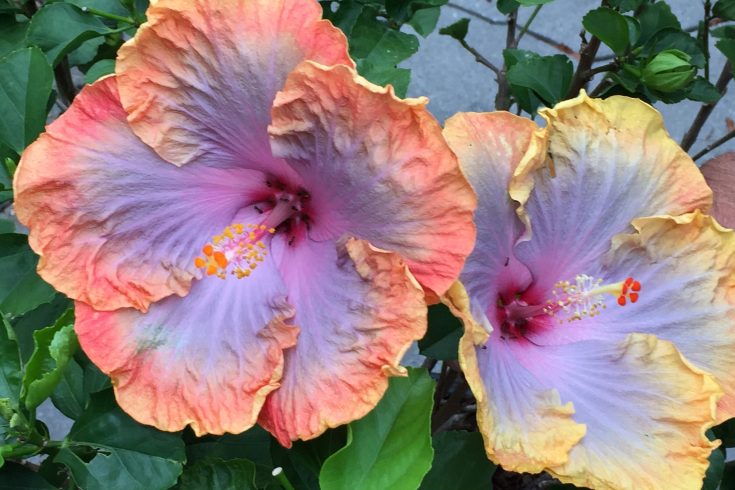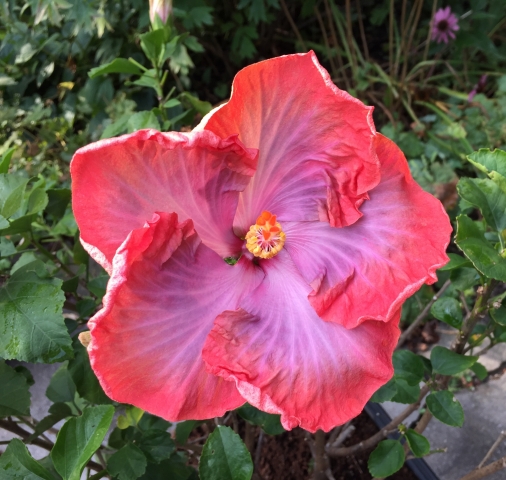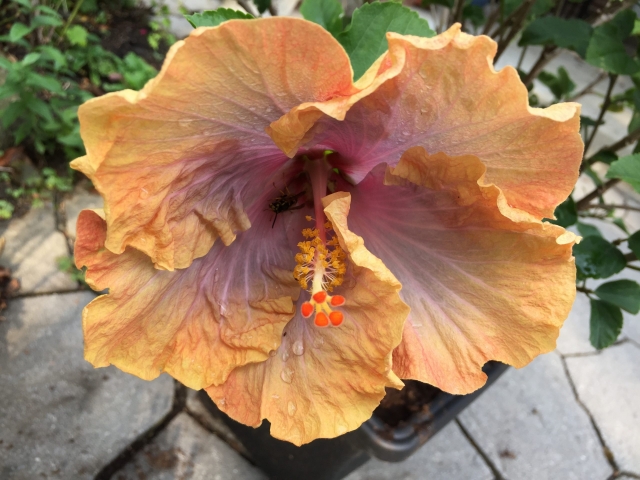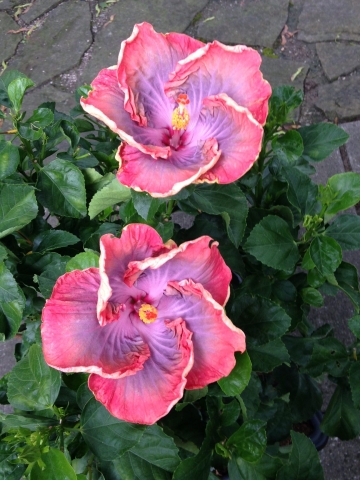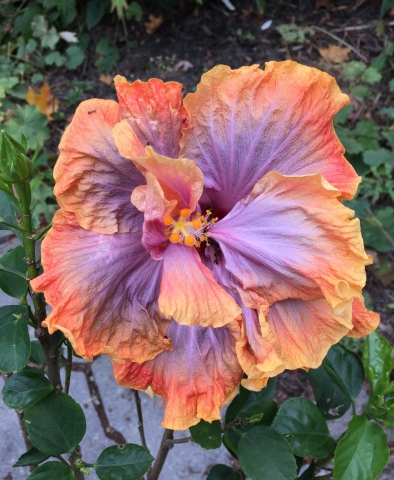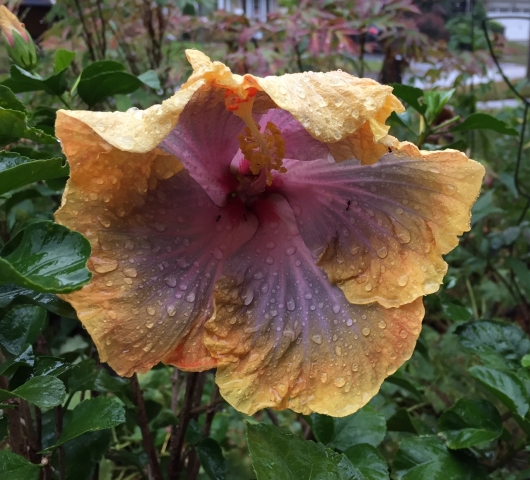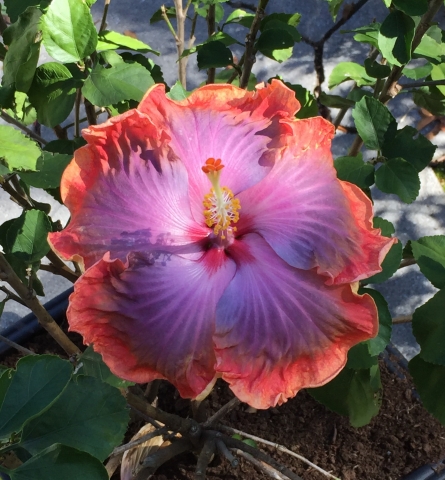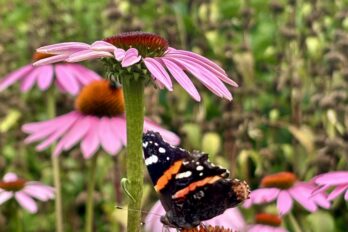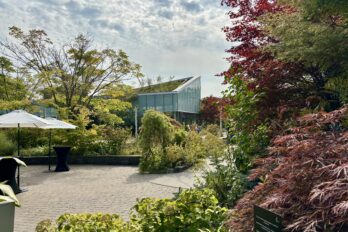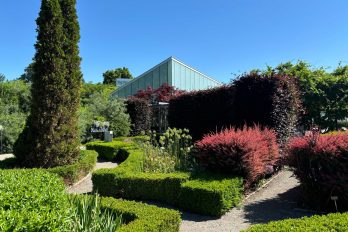Every hibiscus flower pictured here, above and below, is from the same plant.
Last spring I bought an unnamed potted hibiscus plant from Costco. In the store its few blooms appeared to be a pale yellow with a grey-blue centre. I was looking for a red and yellow flower variety that a friend had purchased there but the pale yellows appeared to be all they had left by the time I got there. I decided to buy one anyway, hoping that once established in the natural sunlight of my garden the yellow blossoms might at least get brighter.
Well, imagine my surprise as the summer wore on and flowers on my mystery hibiscus began to appear in different hues and colour combinations. Sometimes a single flower was mainly blue with a ruffled yellow or orange edge. Sometimes it was red with a purple centre. Most of the time it was a single specimen with five petals. But now and then a double flower would emerge with seven, eight or even 10 petals. Because it fascinated me, I began taking pictures.
I grew up in the Bahamas where there are hibiscus bushes with flowers of every colour in just about every garden—white, pink, red, yellow — some with different coloured centres or ruffled edges, but I never noticed different coloured flowers on the same plant.
After many hours of reading books and Googling hibiscus flowers that change colour I have determined that my plant is probably a ‘Sleeping Beauty’ cultivar, a Hidden Valley Hibiscus produced by Hidden Valley Nature Arts in California in 2008. Sleeping Beauty’s parents are red and yellow edged ‘Living Legend’ and red and white centred ‘Love Story,’ two of HVH’s “tried and true” hibiscus cultivars. Or, it could be ‘Hugs and Kisses’ from HibisKiss.
Apparently many hibiscus varieties are known to change colours in accordance with temperature and daylight changes. The science is complicated but basically, hibiscus flower colours, like those of most flowers and fruits, are made up of three basic pigment groups: carotenoids and two types of flavanoids – anthocyanins and flavonols.
Carotenoids, the yellow, orange and red spectrum, are the most stable pigment and their flowers tend to hold their colours even through the hottest days. In fact, the hotter it gets, the brighter these flowers get.
Anthocyanins are what we see as the red pigment in fall leaves. They give hibiscus their showy bands of colour but are much less stable than carotenoids. Blues and purples produced by anthocyanin pigments will be affected by even small changes in the environment. Sensitive to heat, they will produce the fading effect that my plant demonstrates on hot days in the summer.
Flavonols, the pale yellow and white spectrum, have the same characteristics as anthocyanins, degrading in the heat and bright light. Sleeping Beauty’s yellow edges are produced by flavonols. Ph levels of alkalinity and acidity in the flower also lead to colour changes.
Sleeping Beauty does better in partial shade than bright sunlight and is said to make a good houseplant where it can be protected from too much heat and strong light. I’ll be bringing my hibiscus inside for the winter and will do my best to keep it healthy until next spring.
If you have a hibiscus that changes colour please tell us about it!

